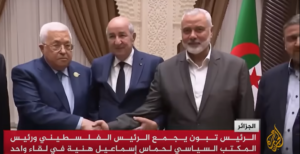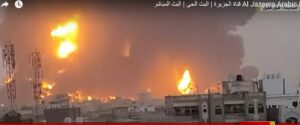The four-day ceasefire, part of a prisoner exchange deal, has triggered reflection in Palestinian society, raising questions about the purpose of the Hamas attack on Israeli settlements bordering the Gaza Strip.
So far, Palestinians have borne a heavy toll from the Hamas attack, with 14,500 dead, a number expected to rise.
During the ceasefire, emergency teams in the Gaza Strip retrieved dozens of bodies from the ruins of houses.
Additionally, there are around 30,000 wounded individuals with varying degrees of injuries and 7,000 missing.
The war displaced 1.4 million Palestinians from the north to the south of the Gaza Strip, resulting in the destruction of thousands of homes.
Most of these houses are now uninhabitable.
According to Palestinian estimates, Israel arrested 3,000 individuals in the Gaza Strip and Judea and Samaria involved in terrorist activities during the war.
The Fatah movement questions whether the Hamas attack aimed at freeing about 5,000 security prisoners from Israeli prisons justifies the high price Palestinians have paid, especially considering the war is not yet over.
A senior Fatah member suggests that if the leaders of the security prisoners had known the high cost in advance, they might have refused such terms and demanded that Hamas not launch an attack against Israel.
According to him, Hamas caused unjustifiable suffering to the Palestinians in the Gaza Strip, damaging the region’s ability to recover and affecting the livelihoods of 18,000 laborers who daily worked in Israel from the Gaza Strip.
The Expected Scenarios After the Ceasefire
Residents of the Gaza Strip are anticipating what will happen when the four-day ceasefire concludes.
The prevailing estimates suggest two main scenarios:
- The IDF may resume fighting against Hamas strongholds in the south and center of the Gaza Strip. This protracted conflict could last several months and potentially turn into a war of attrition for Palestinians against IDF forces, leading to increased attacks on Israel from southern Lebanon, Syria, and Yemen, escalating the risk of a regional war. Defense Minister Yoav Galant mentioned on November 25 that fighting would resume after the ceasefire, continuing for at least another two months. Negotiations with Hamas on hostage release will now occur amid ongoing hostilities.
- Another scenario is that Hamas will attempt to extend the ceasefire for negotiation purposes, presenting additional proposals on behalf of mediators for further prisoner exchanges.
The Israeli war cabinet must decide which scenario to pursue.
Hamas claims victory, asserting that Israel has not achieved its goals in the war.
They anticipate a scenario in which Israel gets entangled in the Gaza Strip while also attempting to attack Hezbollah in Lebanon to fabricate successes.




